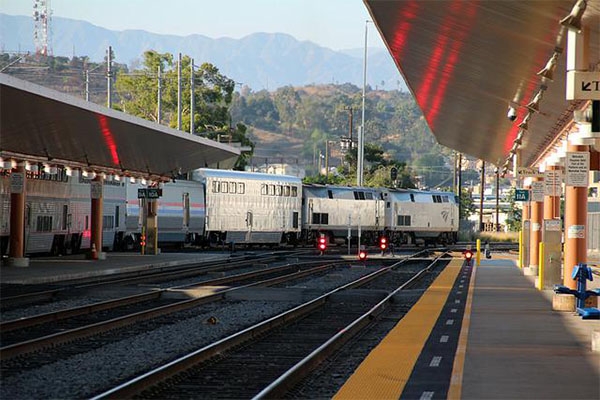What would you think of a corporation that was heading for its 30th year of losses? What would you say if the company offered hokey numbers as an action plan when it’s source of financing finally demanded they become profitable or liquidate?
And what if you were a shareholder in that corporation?
Well, friend, you are. So am I.
We’re talking about the National Railroad Passenger Corporation, the taxpayer supported business known to most people as AMTRAK. From its first full year of operation in 1972 AMTRAK has lost money, usually in amounts a tad under $1 billion a year. During the same period, we’ve deregulated air transportation, reduced airfares through competition, and allowed airlines that could not compete to disappear into receivership. Remember Pan Am? Remember Eastern Airlines? They don’t exist anymore… but plenty of flights are still available.
While Pan Am and Eastern failed because they couldn’t compete in a deregulated environment, Southwest Airlines, starting about the same time as AMTRAK, has provided the model for low cost, high volume, immensely productive, air transportation. Witness, the comparison of Southwest Airlines and AMTRAK from a 1985 column. (That was the last time I wrote about the subject, by the way, so it can’t be said that I am harping or obsessing.)
Which Is the Real ‘Peoples’ Transport?
| Productivity Measure | Southwest | Amtrak |
| Total Assets (mils.) | $646 mils. | $3,623 |
| Total Revenues (mils) | $536 mils. | $558 |
| Passenger Seat-miles (mils) | 4,669 mils. | 4,552 |
| Profit/(Loss) (mils.) | $49.7 mils. | $(763) |
| Employees | 3,934 | 21,000 |
| Cost/Passenger Mile | $0.059 | $0.33 |
| Assets/Passenger Mile | $0.138 | $0.80 |
| Passenger Mi./Employee | 1,190,000 | 217,000 |
| Revenues/Assets | $0.20 | $0.83 |
Sources: Amtrak, Southwest Annual Reports, 1984; 11/24/85 column
Last year, Southwest flew 31.4 billion passenger miles, more than six times the 5 billion passenger miles done at AMTRAK. While Southwest produced about seven times more travel in 1998 as it did in 1984, AMTRAK has virtually stagnated, increasing 10 percent in 14 years.
This year, Southwest Airlines is heading toward a $500 million after-tax profit while producing about seven times the passenger miles as AMTRAK will produce. AMTRAK, however, will lose nearly twice as much as Southwest nets after taxes. Basically, intercity air transportation is 3 to 10 times as productive as Amtrak passenger trains.
That’s why people fly. The price is right. The trip is fast. There is no way— not now, not ever— that rail transportation will be competitive with air transportation. Rail transportation simply isn’t efficient with capital or labor.
Nor is passenger rail efficient with energy. Numerous studies, including one I worked on while on staff at a management consulting company in 1971, have found that trains are about one-third as energy efficient as busses while producing about twice the pollution per passenger mile as either buses or airplanes. The information— and losses— has been around for a long, long time.
Now, responding to the Amtrak Reform and Accountability Act of 1997, which essentially demands that the railroad become profitable by 2002 or face liquidation, Amtrak’s management has created new accounting concepts so it can project a breakeven in 2002. The table below comes directly from the Amtrak website.
Test for Operating Self Sufficiency
| $ Million | FY1999 | FY2000 | FY2001 | FY2002 |
| Revenues | $1866 | $2184 | $2396 | $2501 |
| Expenses | (2796) | (3092) | (3215) | (3253) |
| Operating Profit/(Loss) | (930) | (908) | (819) | (752) |
| Capital for Equipment Overhauls | 76 | 77 | 78 | 80 |
| Depreciation/Non cash Expenses | 370 | 470 | 499 | 487 |
| Budget Gap | (4840 | (361) | (242) | (185) |
| Excess Mandatory Railroad Retirement Tax | 166 | 172 | 179 | 185 |
| Test for Self Sufficiency | (318) | (189) | (63) | 0 |
Source: www.amtrak.com/news/archive/plan3.html
While the operating loss declines from $930 million in 1999 to $752 million in 2002, they then “close” the budget gap with a grab bag of accounting tricks. The two largest involve crediting capital spending for renewing equipment and pretending that depreciation, because it is a non-cash expense, isn’t real. This, from the same organization that has whined for years that lack of capital for modern equipment was part of the reason they could not be profitable.
Some readers, no doubt, will think I am sounding like the Grinch, wanting to take away the nation’s toy train set. In fact, if AMTRAK was privatized many of the trains would still be available, but under different ownership and management, and the federal government would be spending about $1 billion a year less of our money.
To be sure, a billion isn’t what it used to be, but it would still provide $1,000 a year per child to help feed one million hungry children. We have more than one million hungry children in this country.
Photo: Beenerm from Pixabay
(c) A. M. Universal, 1999
